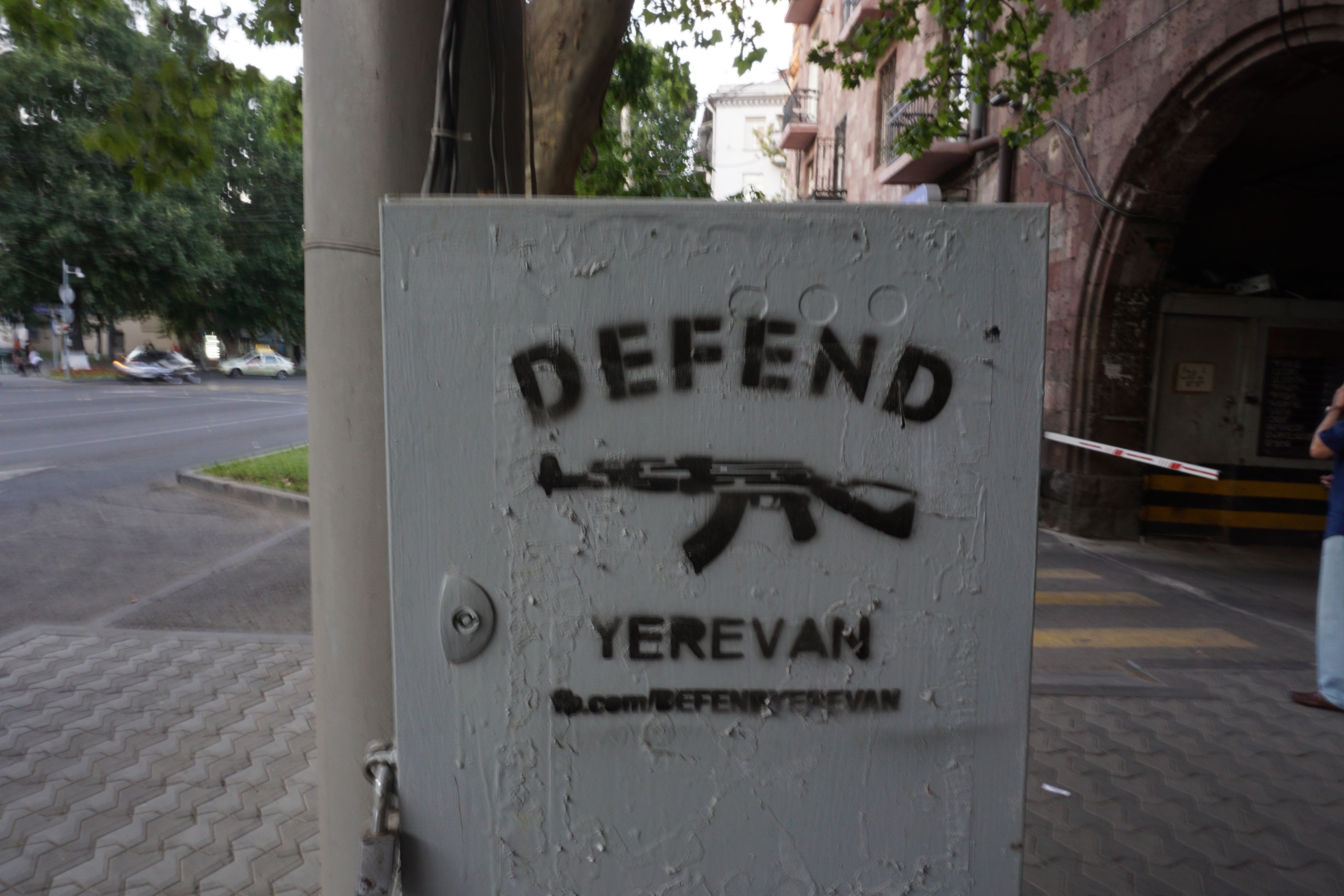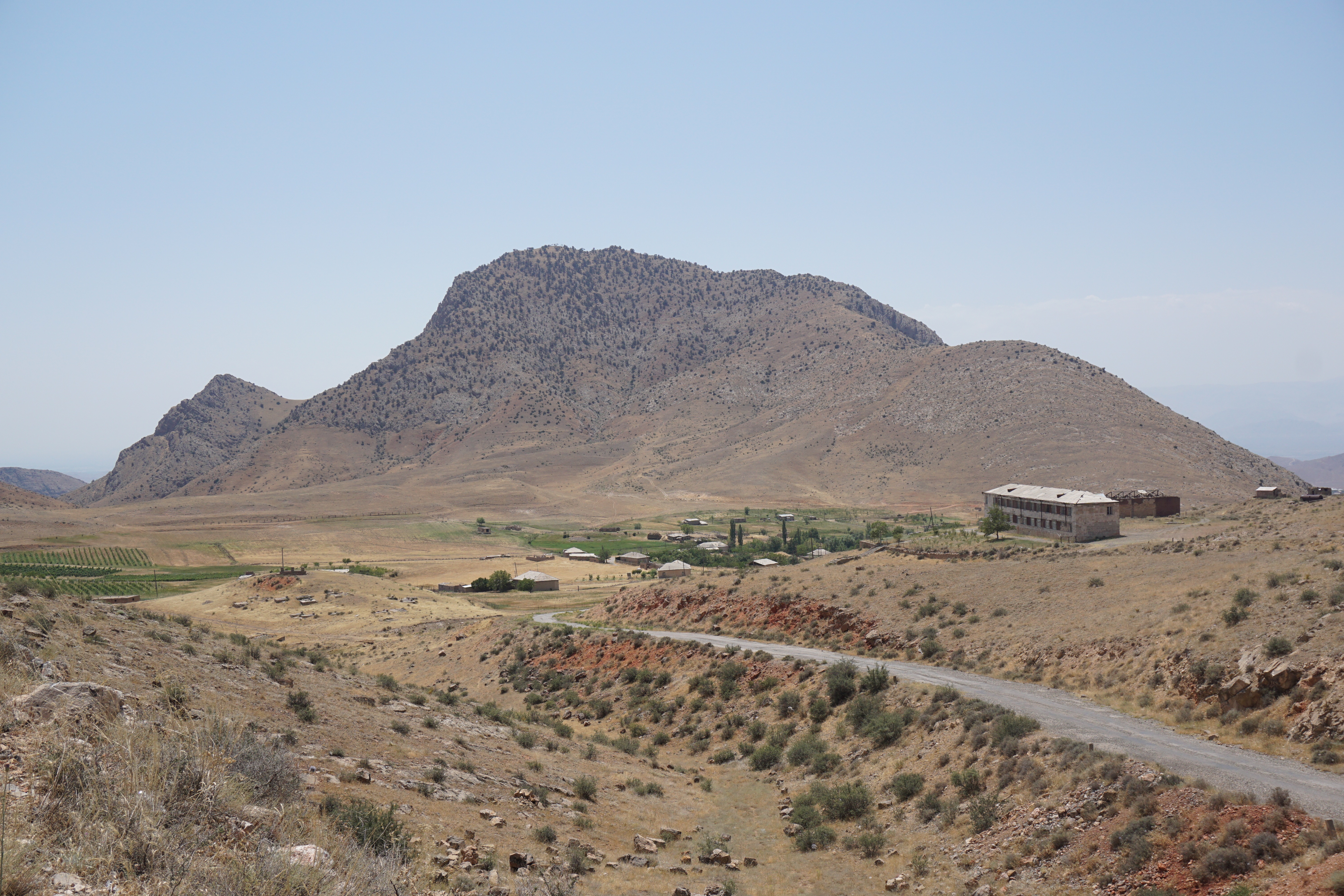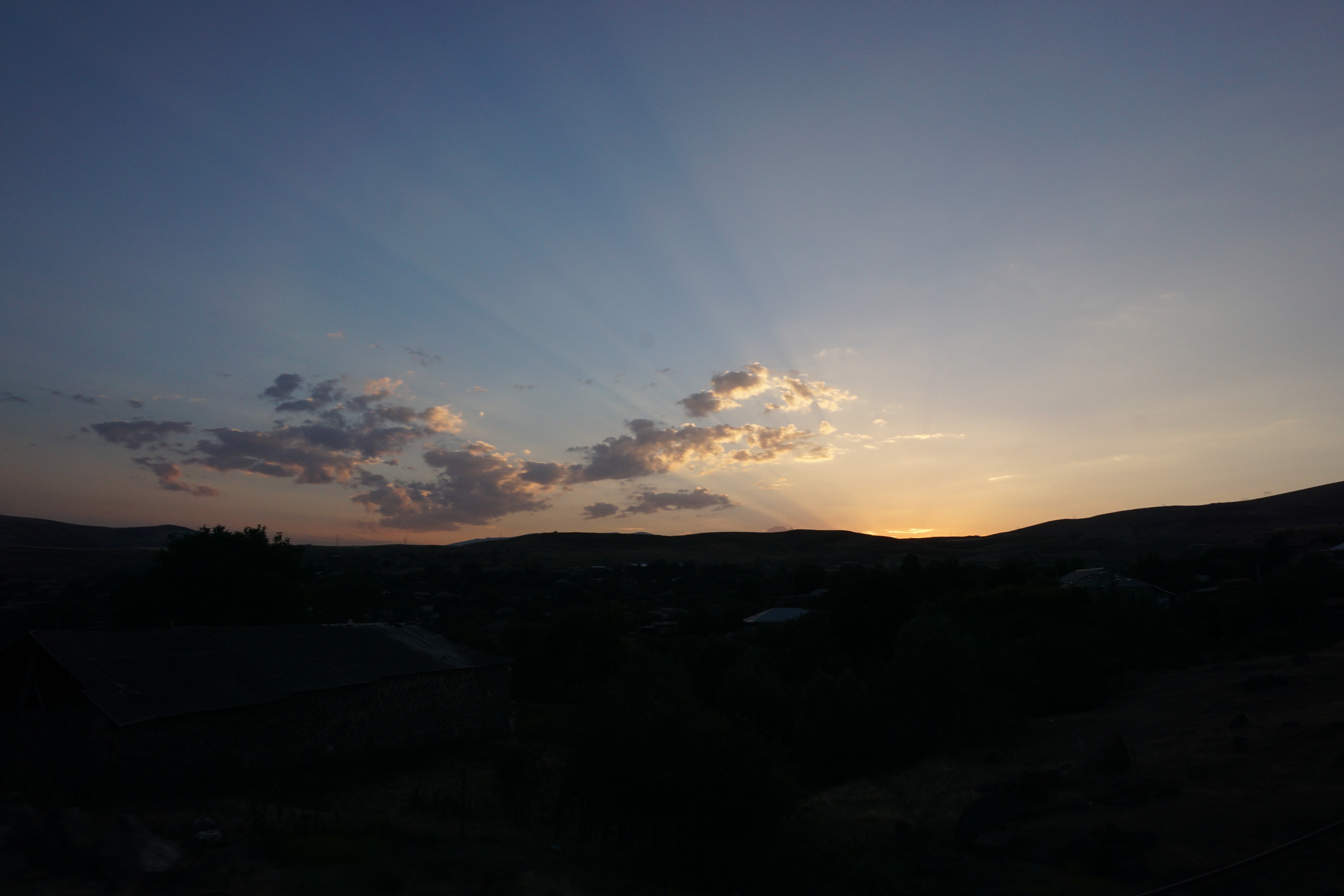When my friends and family learned I would be going to Armenia and Artsakh for my summer holidays back in 2015, I was on the receiving end of some mixed reactions.
“Armenia! Really?” said one colleague, whose wife was Turkish and would never have even considered this as a destination.

“Are there even any Armenians in Armenia?” asked my American friend. “Didn’t they all move to LA?”
Equally perplexed were my Cypriot compatriots. ”What’s wrong with the Greek islands?” they asked.
“Well… tanning on a beach isn’t much of an adventure,” I explained.
Others were more impressed. “Wow! You’re really going to Nagorno-Karabakh?” said one acquaintance who worked for the United Nations.
My father was excited for me. “Cyprus and Armenia have good political relations,” he said. My father said the same thing about Cuba’s relations with Cyprus just before I visited the Caribbean island nation. Even though there is a statue of Cyprus’ first president in Havana, most Cubans knew little to nothing about Cyprus.
I doubted that the Armenians, whose Diaspora is vast and legendary, would be that impressed that Cyprus, a country of barely one million people and whose Armenian community currently numbers at 3,500, would care much about Cypriot political support.
Since I was raised in Cyprus, I was already familiar with Armenians, who make up one of the five constitutional communities in the country. I would walk by churches and schools and tried to decipher the Armenian letters on the walls.
When I was a young student,, I knew that classmates with surnames ending in -ian or -yan were Armenian. I learned about the Genocide from them and that Cyprus was the second country to recognize it. The nation’s capital, Nicosia, even has a memorial dedicated to the victims. I also learned that the ancient Kingdom of Armenia once stretched from the Caucasus south to the Mediterranean. Armenian students also taught me about the powerful French-Armenian Lobby; the glamorous Armenians of Los Angeles; and of course, the queen of Armenians herself: Cher.
“It’s not Kim Kardashian?” I liked to joke.
My favorite reaction, however, came from a lady working for a tour company in Yerevan.
“But why did you want to come here?” she asked, pleased when I knew quite a bit about Armenia already.
I wanted to go somewhere unique and Armenia felt like a secret I wanted in on.
I had always been intrigued by Armenia. Suspended between the Orient and Occident, it felt like it could be the outpost of Europe, or the beginning of Asia. It was the perfect distance via car, but was far enough away to feel somewhat exotic. I wanted to discover countries where no one else I knew had been.Tourists were going to Georgia in droves and Azerbaijan was basking in its post-Eurovision glory, but other than other Armenians, I still do not know anyone who has visited Armenia. I wanted to go somewhere unique and this country felt like a secret I wanted in on.

My trip fortunately coincided with the Pan-Armenian Games, which happen every four years in Yerevan. During the events, my travel partner V and I encountered so many Armenians from the Diaspora: the Lebanese-Armenians who walked the streets in large exuberant groups; the reserved but confident Austrian-Armenians; and the fit and sporty Armenians from Los Angeles with coiffed hair and perfect nose jobs.
At dinner one night, I met Armenians from Athens.
“Are you here with the Cyprus team?”they asked, thinking I was of Armenian descent.
“No. Are they really here?” I said, wishing I had run into them.
“You’re not Cypriot-Armenian?” another asked me.
“No… I’m… Cypriot-Regular…” I said, having a momentary identity crisis.
We also encountered Iranians in Goris, who came from Iran by bus, and and Russians who zipped around the countryside in their black tinted Hummers and Russian license plates.
“Oligarchs,” I said as they sped by.
“Not Oligarchs,” said V. “perhaps they’re mini-garchs,” he joked.
When travelling, you are, by default, an ambassador of your country. Coming from a country as small as mine, chances are I am the only Cypriot people meet, so I wanted to make a good impression.
“How do you say ‘thank you’ in your language?” I asked the waiter at our hotel.
“Shnorhakalutyun,” he said. I stammered to pronounce the word. “But we also say merci,” he added.
“I wanted something a little more Armenian than merci,” I said.
“Then the most Armenian you have is shnorhakalutyun,” he smiled.
When travelling, you are, by default, an ambassador of your country.
We rented a car from an assertive Armenian woman. She knew everyone and seemed to be everyone’s favourite baboushka. She had fiery red hair, wore sunglasses indoors, and spoke Russian–very little English. It seemed to be a generational thing: young people spoke English as a second language, while the older generations spoke Russian.
“Problem with car. You stop. You call,” our baboushka ordered in her halting English.
She was so assertive that I felt I could call her with any problem and she would solve it. In fact, I had that impression of a lot of Armenian women; that they are the heart of the home and the safety net of the country.
One exemplary moment happened during what’s now known as the “Electric Yerevan” demonstrations. These anti-government protests in Republic Square highlighted the people’s dissatisfaction with electricity rate hikes and changes to the constitution. There was one woman I remember vividly. She was older, perhaps in her late 50s; there was something uniquely maternal about her. She was in a floral dress, carrying a small brown handbag. She looked like she was on a mission waiting under some shade. Suddenly I watched in awe, as she boldly confronted a politician who emerged from the post office surrounded by security. He recoiled and hurried off while she continued to say her piece with gusto.
I fondly recall one afternoon at a family-run restaurant near Noravank Monastery, where my impression of strong Armenian women was solidified like the mountain top we were dining on.
“Chicken, pork, beef, either in kebab or not. With bread. Salad. Yogurt and drink,” she said reeling off the menu, friendly but efficient. I instantly liked her.
While we waited for our food, I eavesdropped on the table next to us. The Armenian tour guide, responsible for her group of Italian ladies, was talking about our hands-on hostess.
“She does everything,” the guide said. “She cooks and serves and runs the place.”
I observed the lady. It was true. She managed the kitchen, the cooking and was hospitable through it all. She seemed not only capable of running the restaurant but even the whole Caucasus region, both Greater and Lesser.
“Armenian families eat at restaurants only to give the mother a break from cooking. So usually restaurant meals were never as good as home-cooked meals.”
Like many monasteries in such a mountainous country, Noravank is located high on the mountains. It is situated at the end of a gorge, on the top of a mountain of red rock. Driving toward it felt like something from the American Wild West. The road was long and quiet and began in a cracked opening between the mountains. The road widened the further we drove, until it wound its way up to the Monastery and its stunning vistas.
After important stops in Garni and Gehard and the Monastery of Lake Sevan, we visited what our tour operator called Armenia’s ‘version of Switzerland’ — Dilijan. I didn’t quite believe her, but we went to explore it anyway. We drove along the dusty highway that every few hundred meters advertised a casino. It had the feel of a charming Alpine village, with small, wooden houses overlooking the river.
It wasn’t long before we came across a large rocket-like monument on a small hill. The mostly-forgotten structure was built in Soviet times and was made to represent friendship between Armenia, Azerbaijan and Georgia.
The following day, we began our journey south toward Sisian and stopped at Khor Virap Monastery to pay homage to Mount Ararat, which is elegantly snow-capped even in the summer. This was a surreal sight for me, because I know how important Ararat is to the Armenians. It’s part of their living history and the birthplace of their country. It’s believed that Noah’s ark landed there after the flood, and Armenians are believed to be descendants of his grandson, Hayk, who lends his name to Hayastan. In Turkey, Ararat seems like a far-flung point of interest on its borderlands. During my research on the region, I recalled an anecdote about the Armenian Coat of Arms, which centrally features Ararat.
“You have Ararat on your coat of arms,” said the Turkish diplomat to his Armenian counterpart. “Do you claim Ararat?”
“You have the moon on your coat of arms,” replied the Armenian diplomat. “Do you claim the Moon?”

Not more than a 15-minute drive from Khor Virap, we came to a fork in the road. To the left was the route to southern Armenia. Straight ahead was the Azeri province of Nakhichevan. And where we stood was the border town (more of a village) of Yeraskh. It was a ghost town with soldiers peering from their barracks and watchtowers and the flag of Armenia fluttering at the roundabout. There was a certain charged energy in the borderland. Not even 50 meters from where we were was the Azeri town of Heydarabad, surely also armed with soldiers. I remembered reading how in Nakhichevan, a group of men swept through the province, destroying the beautifully-carved stone crosses called Khachkars.
I learned that prior to the Nagorno-Karabakh War, both countries had exclaves in each other’s countries. They look like small holes on a map of Armenia or Azerbaijan. After the war, both countries lost their exclaves as the border closed and people fled to their motherlands. The Azeri exclave of Karki became the Armenian village of Tigranashen after Tigranes the Great—an ancient king who ruled when the Armenian Kingdom was at its most powerful.

“Tigranashen,” I uttered as we approached it. “What a beautifully sounding name.”
We crossed a small metal bridge over a dry moat overrun by weeds and bushes. In the spring when the snow melts, the water cascades from the mountain brimming the moat. I assumed I would find a village with statues and monuments to Armenian military victories or perhaps an abandoned mosque. Instead I found a boy walking on the village’s main road and a rooster perching on a roof. The houses were haphazardly constructed from a variety of old materials; wood was hammered into stone walls and held up by rusty nails.
In Armenia, the mountains seemed bigger than the country itself. Within short distances, they appeared to change form: from verdant hills to tilting mountains; from dusty plains to elevated plateaus and rocky moonscapes. I was amazed by vast plains of yellow fields that were illuminated gold at sunset.

I wondered: if we took this country and stretched out every mountain and valley, making it as flat as a pancake, how much more ground could it cover?
Author information
The post Armenia Through the Eyes of A Cypriot (Part One) appeared first on The Armenian Weekly.
Source: Armenian Weekly
Link: Armenia Through the Eyes of A Cypriot (Part One)

